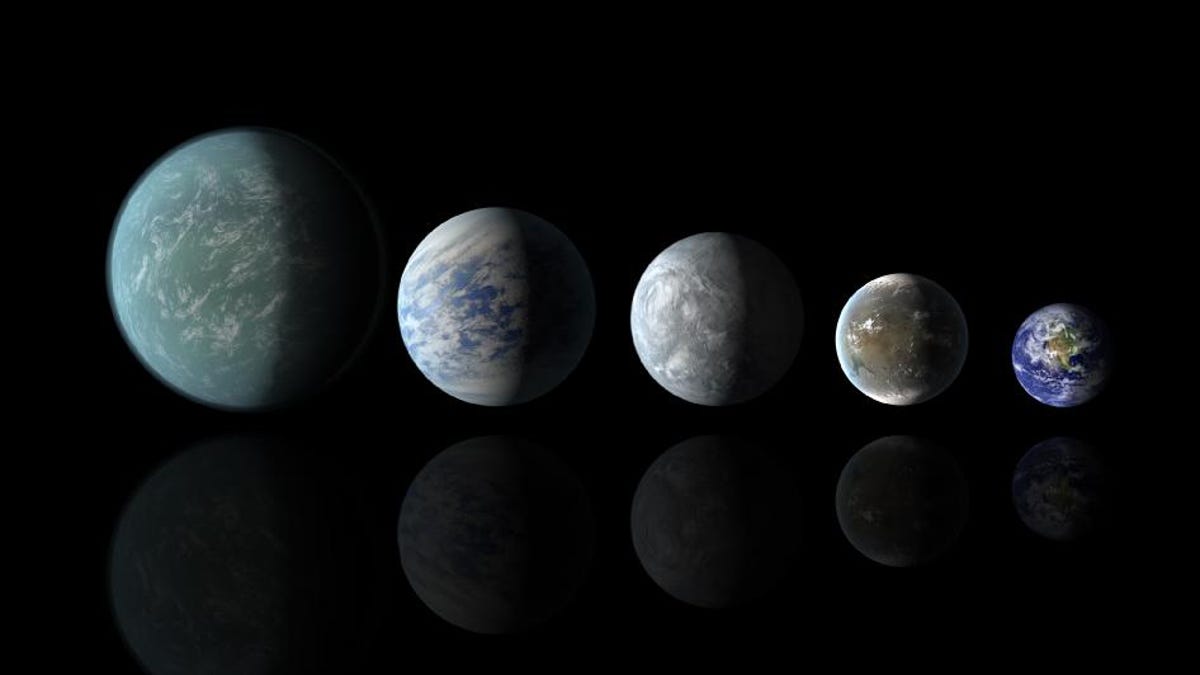NASA has found 3 nice, habitable planets for us to choose from
The agency's Kepler space telescope locates three planets -- in two new planetary systems -- that are the right distance from their suns to make them potentially life-supporting.

NASA, that wily band of intergalactic peepers, says it's spied three distant planets in two different solar systems that are the proper distance from their suns to make them potentially habitable.
I can almost hear Elon Musk's pitch for time-shares in the Kepler-62 and Kepler-69 systems already.
According to a NASA press release:
Two of the newly discovered planets orbit a star smaller and cooler than [our] sun. Kepler-62f is only 40 percent larger than Earth, making it the exoplanet closest to the size of our planet known in the habitable zone of another star. Kepler-62f is likely to have a rocky composition. Kepler-62e orbits on the inner edge of the habitable zone and is roughly 60 percent larger than Earth.
The third planet, Kepler-69c, is 70 percent larger than the size of Earth and orbits in the habitable zone of a star similar to our sun. Astronomers are uncertain about the composition of Kepler-69c, but its orbit of 242 days around a sun-like star resembles that of our neighboring planet Venus.
The Kepler-62 system has five planets in total, three of which have shorter orbits around their sun, making them hotter and inhospitable. The Kepler-69 system has two planets; super-Earth-size 69c and Kepler-69b, which is more than twice the size of Earth and orbits its star -- which is in the same class as our sun and located in the constellation Cygnus -- every 13 days.
NASA scientists caution that there's no way to know for sure right now whether these particular planets do host life, but their discovery puts us one step closer to finding a planet like Earth near a star like our sun.
Recently I attended a panel at South By Southwest on the James Webb Space Telescope, the successor to the Hubble scope set to launch in a few years. NASA telescope scientists there spoke of being able to answer the existential question "are we alone?" within a generation.
"The discovery of these rocky planets in the habitable zone brings us a bit closer to finding a place like home. It is only a matter of time before we know if the galaxy is home to a multitude of planets like Earth, or if we are a rarity," said John Grunsfeld, associate administrator of the Science Mission Directorate at NASA Headquarters.
The announcement follows the discovery over a year ago of the first confirmed planet in the habitable zone -- earth-like Kepler 22-b. However, these new Kepler planets are closer in size to that of earth, making them the smallest planets to be discovered so far in the habitable zone.
Correction, 12:40 p.m. PT: This story was live briefly with inaccurate information about the number of planets found in the habitable zone of their respective planetary systems. A total of three planets are in the habitable zone.

